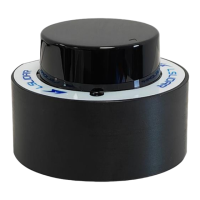
Do you have a question about the LSLIDAR N10 PLUS and is the answer not in the manual?
| Wavelength | 905nm |
|---|---|
| Power Consumption | ≤5W |
| Operating Temperature | -20°C ~ +60°C |
| IP Rating | IP67 |
| Protection Level | IP67 |
| Laser Safety | Class 1 |
| Voltage | 12V DC |
| Power Supply | 12V DC |
Product meets laser safety standards and Class 1 eye safety compliance.
Precautions for product malfunction, housing integrity, operation, and power supply.
Precautions regarding light interference, vibration, RF, and explosive environments.
Guidelines for proper maintenance and avoiding damage during handling.
Based on TOF, 360° scan, accuracy, applications, and mechanism.
How the lidar generates 2D grid map information.
Key technical parameters including wavelength, range, and power.
Detailed mechanical dimensions and optical window information.
Specification of the base connector and wire definition.
Information on the TTL to Type-C USB adapter for data conversion.
Details on power supply, current consumption, and baud rate.
Data output formats and contact for protocol information.
Laser wavelength, power, pulse width, and light spot properties.
Description of the telescopic optical structure and polar coordinate system.
Introduction to the SDK for scan data processing and display.
Software for parameter configuration, testing, and data display on Windows.
Overview of the interface and how to receive real-time data.
Instructions for zooming, panning, and adjusting the point cloud view.
Explanation of buttons in the Lidar Menu for data display.
Functionality of main menu buttons like Select, Set Range, Clear Screen.
Controls for offline data playback and navigation.
Notes on port occupancy and file path naming for Windows client.
Steps to configure the high-performance graphics card for the software.
Checking USB device connection and granting read/write permissions.
Steps to set up workspace, download, compile, and run the ROS driver.
Using RViz to display point cloud data after setting the fixed frame.
Configuring serial device name and topic in the launch file.
Requirements for shipping, installation, and handling precautions.
Recommended storage temperature, humidity, and environmental requirements.
Step-by-step guide for cleaning the lidar's optical window.